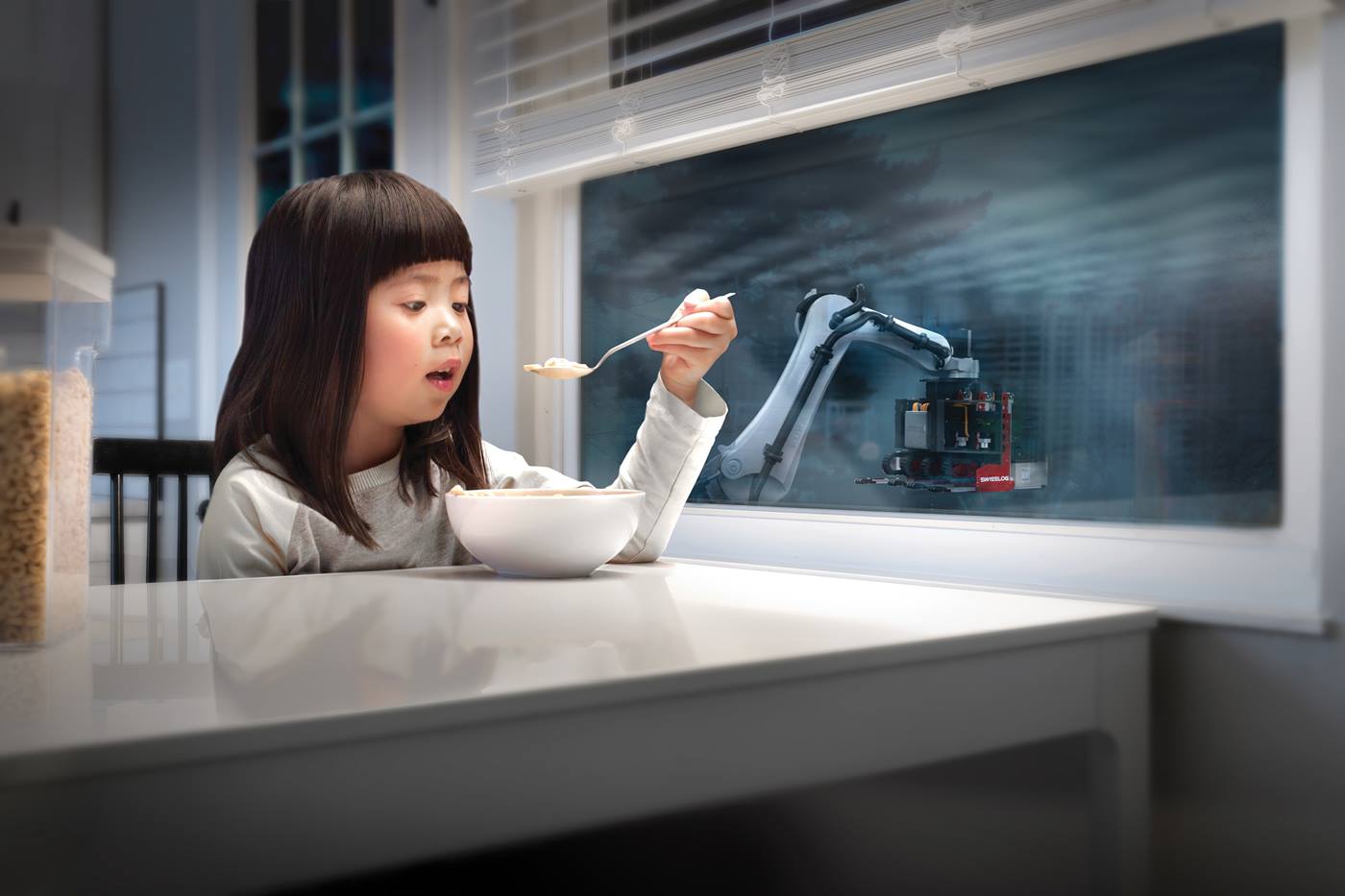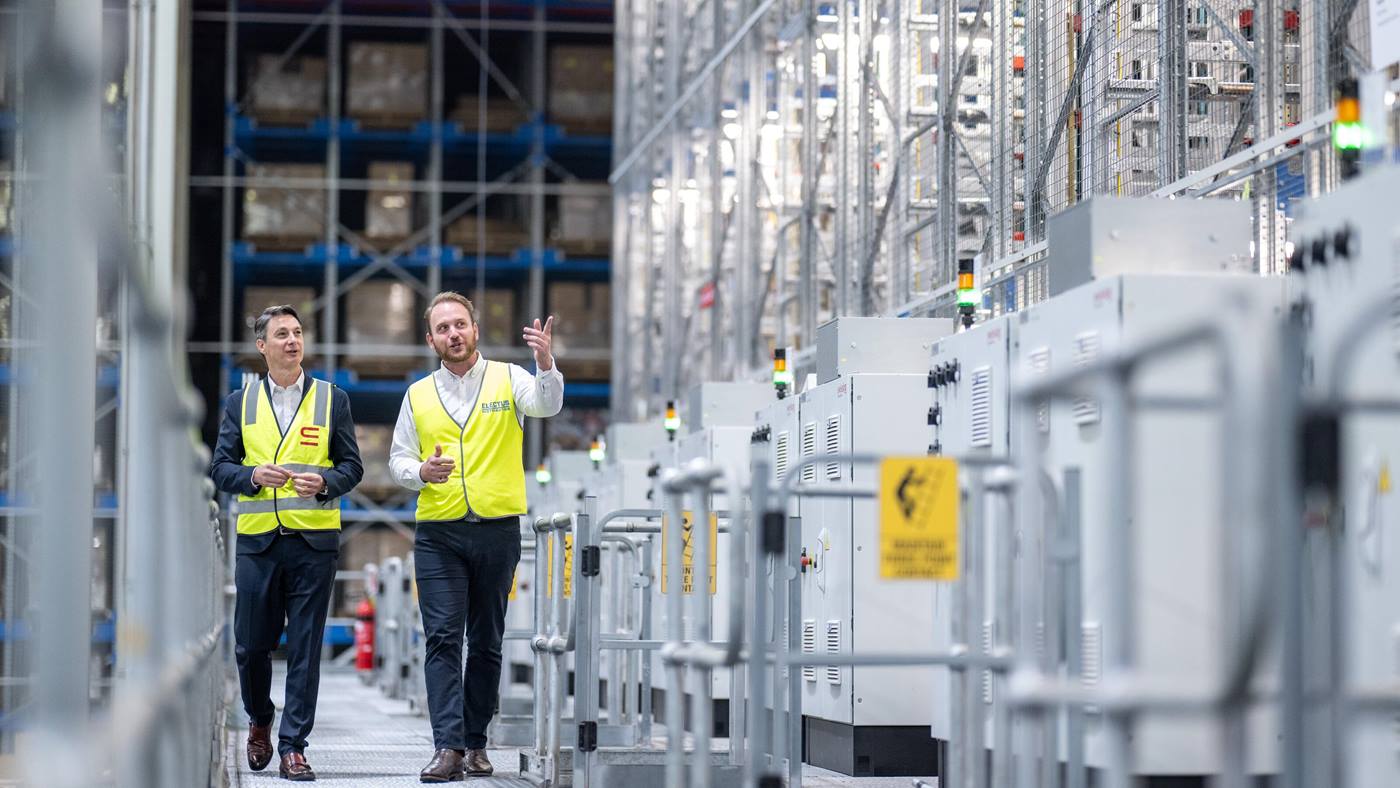1. Layer picking in the deep-freeze warehouse
For operators with steady demand for mixed-SKU pallets, a layer picking and palletizing system integrated with the ASRS can be an effective and feasible solution. Working together, the ASRS and layer picking system—connected by automated conveyors—enable efficient, fully automated mixed-layer palletizing that keeps personnel out of the freezer.
As with any palletizing solution, the feasibility of layer picking for a particular warehouse is dependent on customer order profiles and the volume of pure mixed-layer pallets required. But remember that even if a full layer isn’t required for every mixed-SKU order, it can still be more efficient to customize a mixed-layer pallet to order requirements by swapping out some cases than it would be to build the entire pallet manually.
Swisslog has implemented layer picking solutions integrated with our Vectura pallet crane and PowerStore pallet shuttle ASRS solutions for a number of leading food manufacturers. Swisslog ProMove conveyors transport pallets to the layer picker from the ASRS where mixed-layer pallets are built and then moved outside the freezer or back into the ASRS for storage, with the entire process controlled by our SynQ software.















